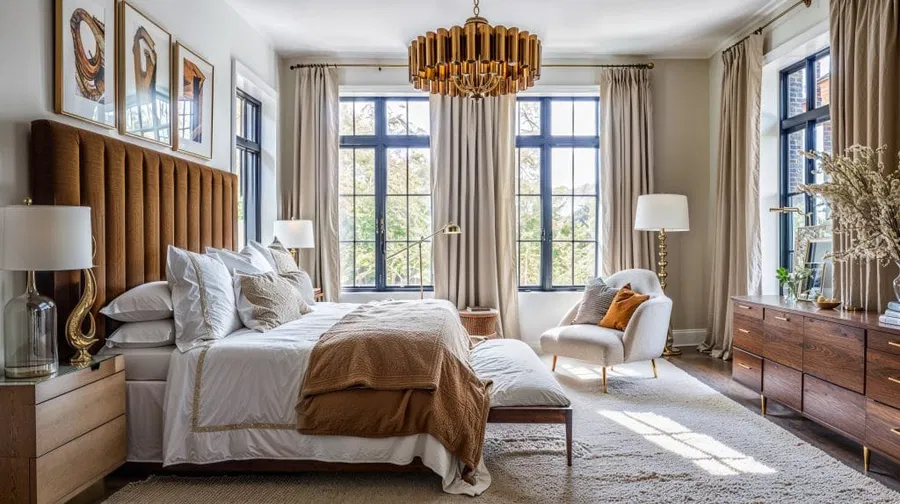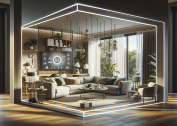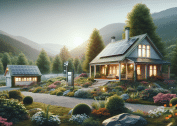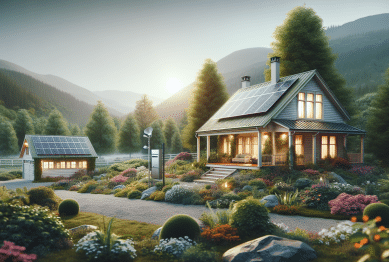Creating a space that fosters tranquility is more than aesthetic—it’s essential for well-being. In 2025, the concept of interior design that encourages relaxation is evolving beyond minimalism, blending natural elements, sensory richness, and deliberately crafted sanctuaries. If you’re looking for a calm-focused approach to home design, this guide offers inspired trends that prioritize rest, serenity, and emotional comfort.

Why Relaxation-Focused Design Is Gaining Momentum
Amid constant digital stimuli and fast urban living, spaces that genuinely promote mental downtime are in high demand. The shift towards emotionally intelligent interiors is underscored by research and expert insight—interiors that integrate nature, soft textures, and sensory layers can significantly lower stress and support emotional balance.
Biophilic Design: Nature at Home
Bringing nature into interiors remains the leading trend in relaxation-centric design. Biophilic design emphasizes connection to organic materials—stone, wood, clay—as well as natural light, greenery, and textural echoes of the outdoors.
Stress-Reducing Design Elements:
- Use plenty of indoor plants, natural textures, and earthy tones.
- Maximize daylight with large windows or skylights.
- Opt for materials that age gracefully—wood that weathers, stone that develops patina—for living warmth.
Through natural cues, biophilic interiors invite calm and connection, reducing anxiety and improving focus.
Color that Calms
In 2025, color remains a powerful tool for creating calming spaces. Designers are embracing:
- Earth tones like moss green, terracotta, deep burgundy.
- Soft blues, gentle grays—especially those with sensory-focused undertones—for a soothing base.
A balanced color palette sets the tone for rest without feeling flat or uninspired.
Pockets of Sanctuary
The concept of “pockets of sanctuary” speaks directly to relaxation-focused design. Smaller, dedicated zones—like reading nooks, meditation corners, or mini wellness setups—encourage intentional rest.
How to Create Refuges:
- Use foldable screens or curtains to carve a quiet corner.
- Add a cozy chair, soft lighting, and personal decor to invite pause.
- Incorporate these restful zones in any room, even the living room or bedroom.
These nooks serve as micro-retreats where you can step away from daily demand and recharge.
Sensory and Emotional Design
Relaxing interiors now appeal to multiple senses, creating emotionally rich environments. In 2025’s most thoughtful homes, elements like texture, scent, and soundscape play equal roles to visual design.
Sensory Design Tips:
- Layer plush textiles—throws, rugs, cushions—for tactile comfort.
- Install circadian lighting that mimics natural light cycles.
- Use scent diffusers with mild aromas like lavender or cedar to ground the space.
- Include soft ambient sounds—like water features or gentle playlists—to encourage tranquility.
These features work together to support calm rather than simply decorate.
Japandi & Soft Minimalism
Japandi—the fusion of Japanese and Scandinavian aesthetics—continues to be a timeless fit for relaxation design. Clean lines, uncluttered simplicity, and warm neutrals define this style, promoting serene minimalism.
Elements to embrace:
- Use low-profile, simple furniture that emphasizes form and function.
- Keep decor minimal and clutter-free.
- Combine wood finishes, beige tones, and subdued lighting for warmth and clarity.
Japandi interiors are functional and emotionally centered, offering quietude through disciplined simplicity.
Crafted Comfort & Material Drenching
Another up-and-coming trend is material drenching—covering an entire room in one material, such as wood or fabric, to create a sumptuous cocoon-like effect.
Pair this with a focus on craftsmanship—handmade furniture and artisanal finishes add resonance and intentionality in your space.
Tips for Cozy Craft:
- Choose sustainable materials like reclaimed wood or hand-stitched upholstery.
- Adorn walls or ceilings with continuous textures—wood paneling or fabric to absorb sound and bring softness.
- Opt for pieces that age gracefully and carry a narrative.
Designing for Rest: Quick Checklist
- Natural Elements: Prioritize light, plants, and organic materials.
- Soothing Colors: Layer calming earth tones, soft grays, gentle blues.
- Quiet Zones: Create small, restful areas with seating and soft lighting.
- Sensory Layers: Include textures, scents, schedule lighting, and subtle sound.
- Minimalist Warmth: Use clean lines and neutral palettes with warm accents.
- Textural Immersion: Consider covering a space in one material for immersive calm.
Conclusion
Interior design that encourages relaxation is evolving from a niche aesthetic to a mainstream necessity. By weaving nature, sensory awareness, and intentional retreats into home spaces, design is shifting toward emotional intelligence. Trends like biophilia, color psychology, wellness corners, and crafted environments are reshaping how homes function—not just as places to live, but as sanctuaries for well-being.
References
- Sixty percent of design professionals cite integrating nature into homes as the top trend in 2025. https://builderonline.com/design/consumer-trends/biophilic-design-and-color-drenching-are-top-trends-for-2025_o?utm_source=chatgpt.com
- Earth tones like deep burgundy, moss, and terracotta enhance wellness-focused interiors. https://www.elledecor.com/design-decorate/trends/a63094900/interior-design-trends-2025/?utm_source=chatgpt.com
- The concept of “pockets of sanctuary” is a fast-growing trend in lofted wellness design. https://www.homesandgardens.com/interior-design/interior-design-trends?utm_source=chatgpt.com









